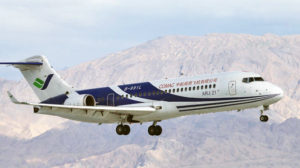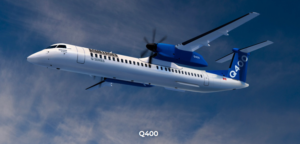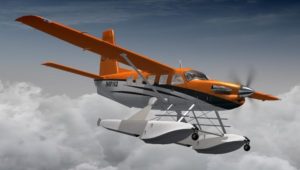SHANGHAI (Reuters) – China’s regional jet market is struggling to get off the ground as Beijing slows approvals for new airlines, industry executives say, dashing hopes that recent policy changes would drive aircraft sales.
Foreign companies such as Bombardier Inc (BBDb.TO), Embraer SA (EMBR3.A) and ATR had cheered a 2016 policy that required passenger carriers to operate at least 25 city-hopper jets before graduating to bigger aircraft.
It appeared to all but assure sales of such small planes in the world’s fastest-growing aircraft market, currently dominated by wide-body jets, as the regulator tried to boost flights into China’s smaller cities.
But there is a problem, executives say: the Civil Aviation Administration of China (CAAC) has only approved two new airlines since the “Rule 96” policy went into effect.
“The truth is that almost two years has passed and I have not succeeded in one single deal,” said one executive from a Chinese aircraft lessor speaking on condition of anonymity, who added that he had met with numerous start-ups to promote regional aircraft.
The executives added that although the slowdown was probably well meaning, caused by regulators’ concerns over safety and quality, it meant that there was a queue of at least six Chinese airlines waiting for approval.
The policy had stoked optimism among regional aircraft makers, as Chinese airlines have for years mostly focussed on growing their fleets of Airbus (AIR.PA) and Boeing
Out of 3,311 commercial aircraft flying in China at the end of March, just 5 percent were regional jets, the CAAC said in April. By comparison, regional jets in 2016 took up 30.6 percent of the 7,039-strong fleet of aircraft in the United States, according to data from the Federal Aviation Administration.
“The intention is that (the regulators) want to push, but they have enhanced the entry barriers so they have very high standards for the investors,” said Wang Qi, chief China representative for French turboprop manufacturer ATR, which is renewing its Chinese certification.
Chinese airlines in general have a good safety record.
The CAAC did not respond to requests for comment.
PATIENCE AND FRUSTRATION
For many, Rule 96 underlined Beijing’s intentions to improve regional air transport. The country’s 13th five-year plan for 2016-2020 included 500 new airports.
But only Tianjiao Airlines in Inner Mongolia and Air China <601111.SS> <0753.HK> subsidiary Beijing Airlines, which converted from a private charter operator to a passenger airline, were approved last year.
An executive at Tianju Airlines, which is waiting for the green light to start carrier operations from central China’s Shaanxi province, said regulators grew more cautious.
But he said the airline hopes to fly next year, after four years of preparations and at least one change to its proposal to adjust to CAAC policies.
“We currently fulfil all conditions,” said the executive, who only gave his surname as Li because he was not authorised to speak to the media.
AirAsia Group (AIRA.KL), which is working with local partners to establish a low-cost carrier in China, has looked at options like buying an existing air operator’s certification to speed things up, according to two sources familiar with their plans.
The company, which last year signed a memorandum of understanding with China Everbright Group and the Henan government, declined to comment.
OPTIMISM
The only aircraft that meet Rule 96’s seat limits of 100 or less and are certified to be sold in China are Commercial Aircraft Corp of China Ltd’s [CMAFC.UL] ARJ-21, AVIC Aircraft’s <000768.SZ> MA60 turboprop and Bombardier’s Q400 and CRJ 900 models.
Bombardier and Embraer said they remained optimistic about their prospects in China.
“The situation under Rule 96 continues to evolve,” Bombardier Commercial Aircraft’s President Fred Cromer said in an interview with Reuters at the company’s Montreal-area factory in the Canadian province of Quebec last week.
“The fact that we have a plane that’s well known by the authorities there and an operator that operates quite a few works in our favour,” he said in reference to Bombardier CRJ 900 operator China Express.
Embraer said in an e-mail that it expects its E175 jet to obtain CAAC certification by September.
But Corrine Png, chief executive of transport consultancy Crucial Perspective, said Chinese airlines were still more inclined to buy larger jets to meet surging travel demand amid a shortage of landing slots and pilots.
“It would be costly to maintain a small number of regional jets in China which may not be economically efficient from the Chinese airlines standpoint,” she said.
HOMEGROWN COMPETITION
Industry insiders are also concerned that Beijing may be promoting China’s domestically produced aircraft over more advanced models.
COMAC put the ARJ-21 regional jet into service in 2016 and has delivered just five so far. But it has orders for 450 planes, dwarfing the numbers for Bombardier and Embraer’s in China.
Tianju Airlines told Reuters it had considered Airbus’ A320 and Embraer E190 jets but decided to buy the ARJ-21.
“We think it’s the most suitable model for us,” said Li, who declined to comment further.
ATR’s Wang said the turboprop maker planned to look beyond regional jets and consider general aviation, which Beijing has also pledged to support with infrastructure investment.
Any company can buy an aircraft and begin operating it for charters, for instance. That means ATR could reconfigure its 42-seat model into a 30-seat offering for such businesses, he said.
“That category has very low barriers and there are potential investors for ATR,” he said.
(By Brenda Goh, additional Reporting by Allison Lampert in MONTREAL, Jamie Freed in SINGAPORE, Brad Haynes in SAO PAOLO and the SHANGHAI Newsroom; Editing by Gerry Doyle)




